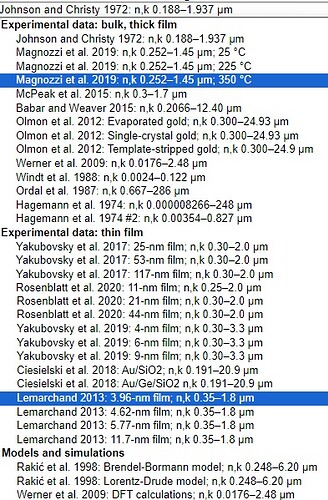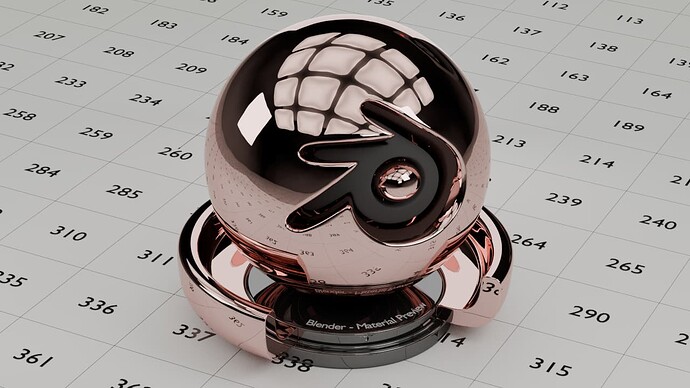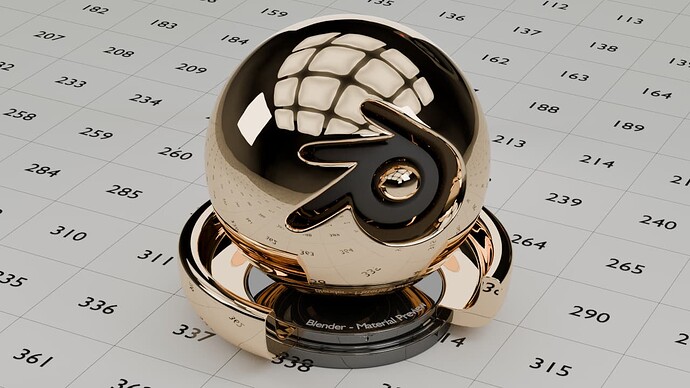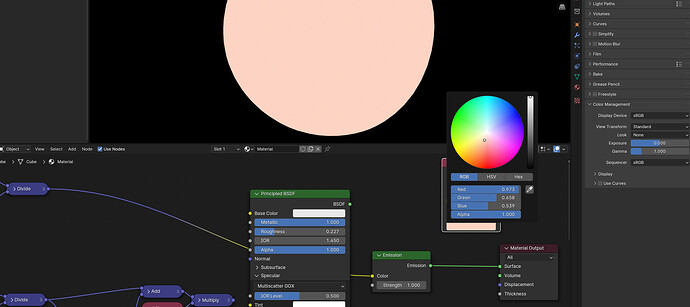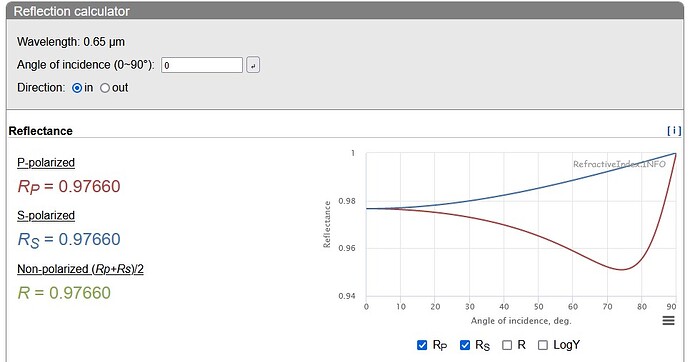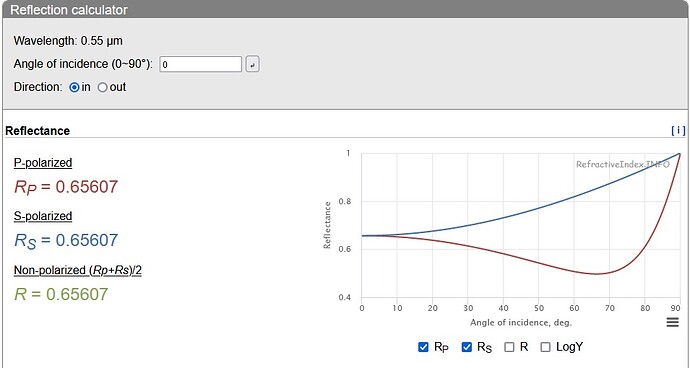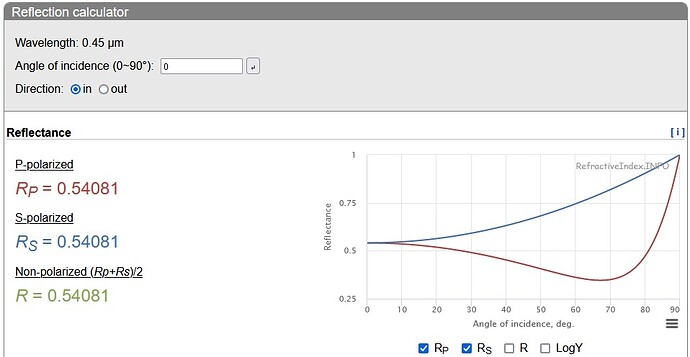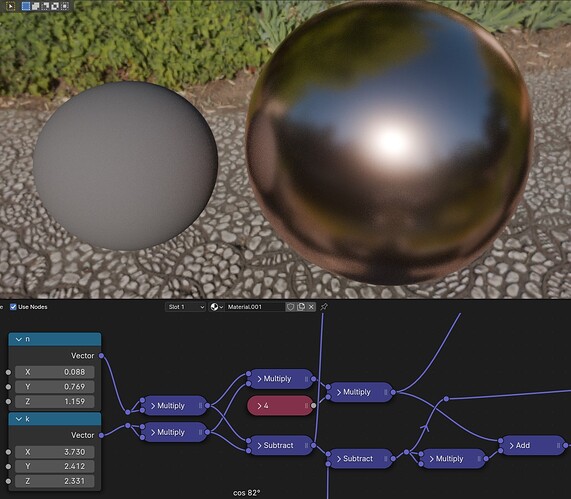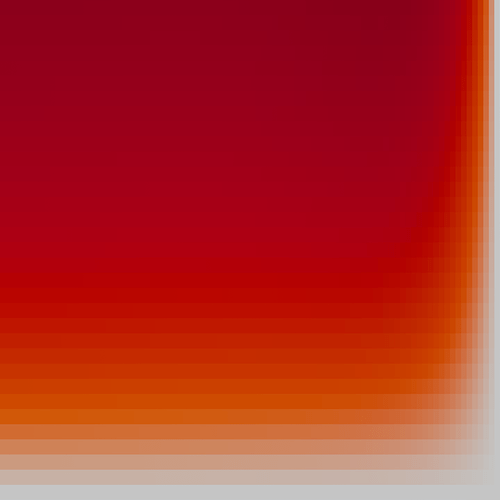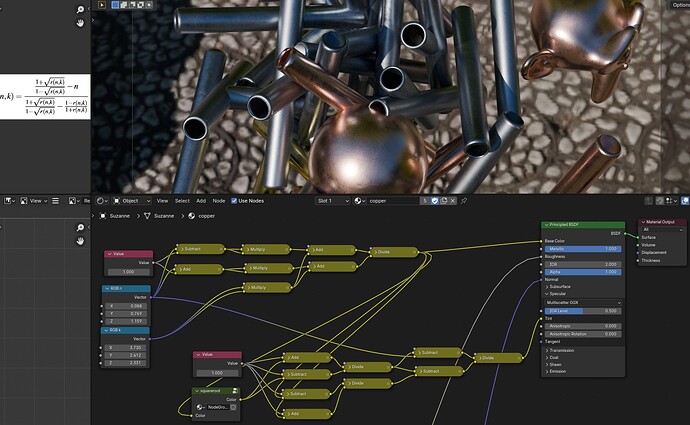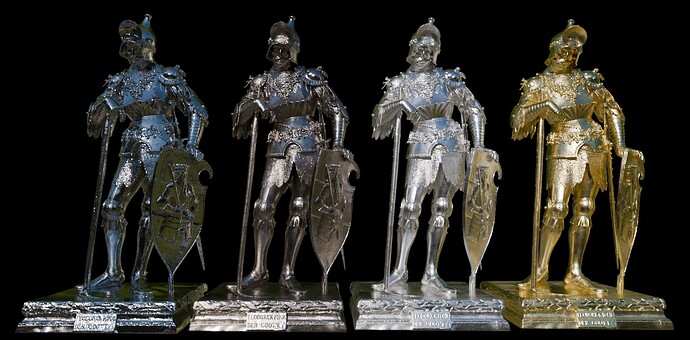Only now saw that. If all that is supposed to be gold, it’s pretty far off. None of these look like gold.
I’m thinking the math isn’t to blame here though. It’s the nk values that gotta be off.
Possible, it is pure gold (100%) at 480, 525, 650nm
And data can vary according to measurement conditions.
https://refractiveindex.info/?shelf=main&book=Au&page=Johnson
gold : Werner et al. 2009: DFT calculations
Rosenblatt et al. 2020 44-nm film
yeah, see, that’s what I was talking about. Simply picking individual wavelengths and calling it a day is unfortunately nonsense. You gotta actually do the spectral math and convert to the correct color.
You most likely want the bulk version (i.e. a chunk of gold). Thin film may look quite different.
Also, unless you want really hot gold, perhaps use the gold at 25°C for some room temperature gold lol
The differences are probably small, but still, why would you use the version baking in an oven?
Have checked your equation.Seems quite accurate.
Copper example,with standard view.
The copper with HDR exposure to 0.18 grey AgX none look
Well yeah, it should, in fact, be exactly correct.
I double checked with spectral Cycles and the results for F0 and F82 for gold ought to be this:
F0:

F82:
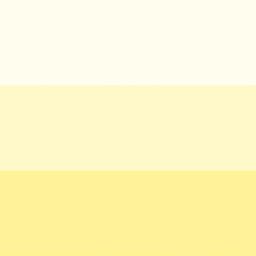
(top is RS, bottom is RP, middle is a 50:50 mix for R)
And here is Copper:
F0:

F82:
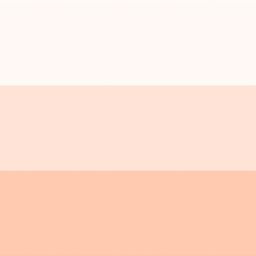
I am curious about its desatured look though.If you look at images of gold or copper and from knowing copper color from wire,copper looks not that flat.
note that this is a single bounce of “pure white” (Illuminant E) light and zero roughness.
Deeper bounces will very quickly saturate, and roughness also deepens the color for basically the same reason (because the surface will sometimes reflect itself.
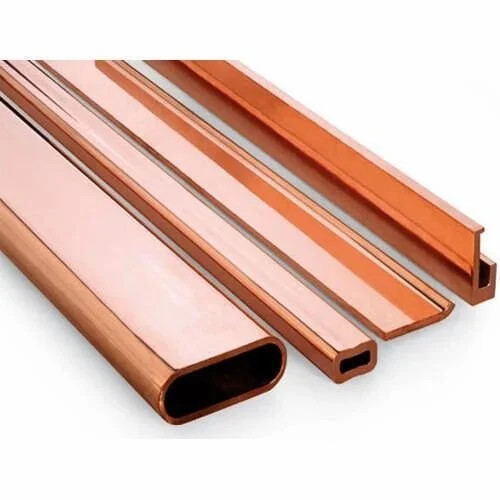
Here is copper and gold after 0-4 bounces (0 means you’re still at white light) using unpolarized light.
Copper seems to be more a saturated brownish-red,could be the sample who knows.
it’s gonna look more saturated when it’s darker lit and also from bounce light.
Note, that the saturation actually increases really fast. Already on the second bounce, gold is out of gamut at F0. (in terms of sRGB, the blue channel ought to be negative) For copper it takes five bounces to get there.
Here are some deeper bounces for copper and gold:
The swatches go from 0-32 bounces from bottom to top and from 0-90° in 1° increments from left to right. Here they are shown in AgX to avoid the spectral problems. But of course that means the colors aren’t quite as directly usable.
Ok its difficult to check if this material appearence is correct,since we dont have the sample or reference images from.My tests of your equation comparing the values from the refractive site i posted, the result seems correct.
I think the next step should be to compare the nk materials with reference nk materials from other renderengines.
edit,i have rechecked the Born Wolf equation without squaring for R0 its the same result as your equation for R0 output.
I found the paper from adobe (with f82 math).Lukas posted it before but his link is not working anymore.
https://helpx.adobe.com/content/dam/substance-3d/general-knowledge/asm/Adobe%20Standard%20Material%20-%20Technical%20Documentation%20-%20May2023.pdf
I have build the gulbrandsen grazing equation node setup for tint color.Seems to work decent as well.
Thanks,i fixed it.
The bottommost subtract and add nodes should use r, not the square root of r.
yeah, it’s just what happens if you plug in 0 for the angle. Cosines become 1, Sines become 0, so a bunch of stuff falls away automatically.
Squaring it will effectively amount to doubling the number of bounces.
Thanks for the paper link
Parameter values for real metals
In Table 1 we show parameter values for several common metals. To derive these, we started with tabulated spectral complex refractive indexes for each metal, attempting to use measured data with the best balance of recency and resolution within the visible spectrum [17]. Then, for each metal, using 1-nm increments, we calculated the reflectivity at 0◦ , 82◦ , and 90◦using the real Fresnel equations and integrated these values with Illuminant D65 (to align with the white point of many common RGB color spaces) and the 2◦physiologicallyrelevant XYZ color-matching functions (those transformed from the 2◦LMS cone fundamentals) [15]. We then converted the XYZ data into various color spaces, performing a few minor additional adjustments to deal with the limitations of the RGB conversions. Finally, we set the F0 parameter to the 0◦ reflectivity directly and set the F82-tint parameter to the ratio of our calculated reflectivity at 82◦and the value predicted by the Schlick approximation at 82◦
.
[15] http://cvrl.ioo.ucl.ac.uk/
Interesting
Do you have a comparison with default 4.0 maybe? Edit: Nvm.
what are you talking about? This is default 4.0.
I suppose the HDRI lighting the models differently based on their position is a bit misleading (Gold being lit green while Silver blue) Nevermind then.
Rendered with 4.1.0 alpha.Since kram and i have posted the node setups you can do you own tests.If something is still unclear pls ask.
Exactly.You can see the HDR used in the single silver rendering above.It has sky ,trees ,bushes and grass.I wonder why such a question came up about,its just reflections.
I deactivated the HDR for the four material objects,because the backround looked to distracting.
I think gold looks lit green because the blue sky is reflected yellowish by gold, gaining that green tint
no, that’s gold being lit teal (which is both green and blue in terms of channels) but since gold is so yellow (red and green in terms of channels), it turns green. Gold is extremely reflective in red and barely reflective in blue.
It’s possible that in reality the sky wouldn’t look as greenish in gold, but if there is a significant difference, it’s gonna be one you’ll need spectral rendering for to achieve
